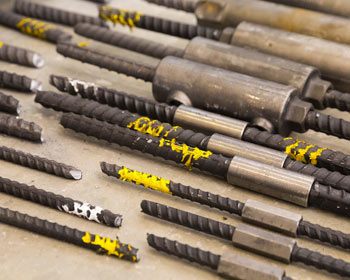MPC
New Test for Bar Couplers May Open Door for Use in Accelerated Construction
Posted: Mar 1, 2019
 Couplers are not allowed to be used in bridge column plastic hinges in high seismic regions. This prevents their use as a precast column connection, a potential use that would facilitate accelerated construction. This ban is because of a lack of systematic test data on the coupler performance, limited experimental studies on mechanically spliced columns, and engineering precautions.
Couplers are not allowed to be used in bridge column plastic hinges in high seismic regions. This prevents their use as a precast column connection, a potential use that would facilitate accelerated construction. This ban is because of a lack of systematic test data on the coupler performance, limited experimental studies on mechanically spliced columns, and engineering precautions.
In this study, MPC researchers:
- developed a new testing standard for mechanical bar splices
- developed a comprehensive database for mechanical bar splices
The experimental data showed that the coupler length, size, and type significantly affect the splice performance. The general trend was that longer couplers exhibited lower strain capacities compared to shorter couplers. Couplers with higher rigid length factors showed the lowest strain capacities. Furthermore, the coupler acceptance criteria and the coupler stress-strain model proposed by Tazarv and Saiidi (2016) were found viable to identify couplers that are suited for bridge columns. These couplers were categorized as “seismic couplers.” The test data also showed that consistent performance can be achieved using the proposed standard testing method for couplers. Finally, the parametric study showed that the size, type, and length of couplers can significantly affect the ductility of bridge columns. Longer couplers and couplers with higher “rigid length factors” may reduce the column displacement ductility capacity by 43%.
Mostafa Tazarv, Ph.D.
South Dakota State Univesity
Mechanical Bar Splices for Accelerated Construction of Bridge Columns
MPC-19-372

